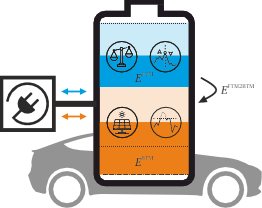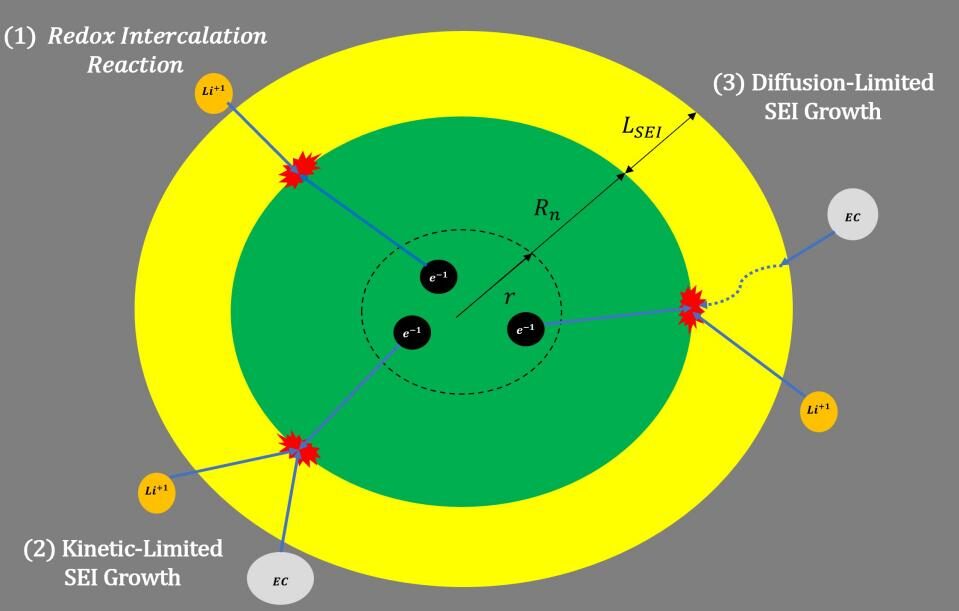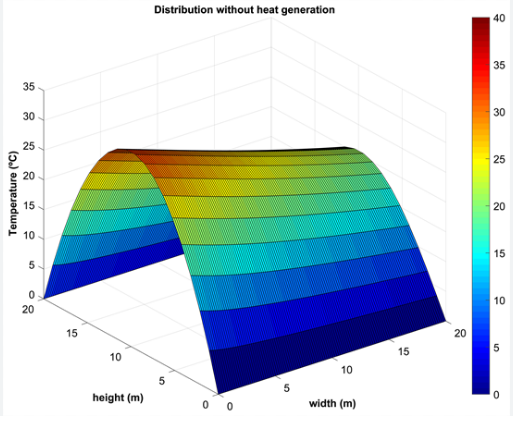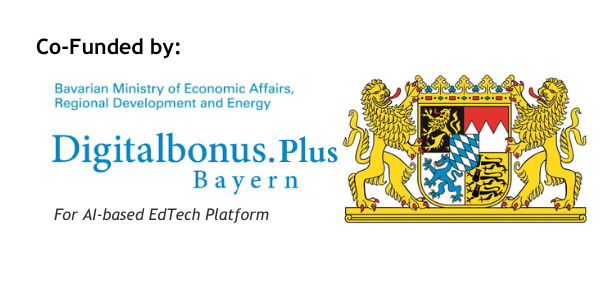Thermal Analysis Tutoring for Students

Thermal analysis, which encompasses heat transfer, thermodynamics, and material behavior, can be one of the most challenging topics for high school and university students. Simply put, heat transfer describes the flow of heat (thermal energy) due to temperature differences. Concepts like conduction (heat flowing through solids), convection (heat carried by fluids), and radiation (heat exchanged via electromagnetic waves) are all covered under this umbrella. Because thermal analysis is fundamental to physics, engineering, and chemistry, mastering it is crucial. For example, engineering fields rely on designing heat exchangers, engines, or electronics cooling systems – all of which use heat transfer and thermodynamics. However, students often find the math and abstract concepts difficult. Thermal analysis tutoring offers a personalized solution: one-on-one guidance can help students build strong intuition and problem-solving skills in topics like heat conduction, energy balance, and how materials respond to temperature.
Tutoring in thermal analysis helps bridge gaps in understanding. In typical classrooms, teachers juggle many topics at once and can’t always give each student individual attention. By contrast, a tutor can focus on a student’s unique struggles. Private tutoring delivers the personalized learning needed for academic success and student confidence. Students work at their own pace, ask questions freely, and receive immediate feedback. This tailored approach often leads to measurable improvements. In short, thermal analysis tutoring transforms complex theory into clear, understandable lessons.
Why Thermal Analysis Matters
Heat transfer and thermodynamics are closely related fields that play a crucial role in understanding natural phenomena and designing engineering systems. In practical terms, learning thermal analysis opens doors to advanced topics like renewable energy, aerospace engineering, and materials science. For example, understanding Fourier’s Law of heat conduction or Newton’s Law of cooling allows students to predict temperature changes in real systems. Simulations and experiments (such as seeing how a heat sink dissipates heat in a computer) reinforce these ideas. Tutors often use visual aids or software to show temperature distributions in components, making the abstract math come alive. Popular software tools include ANSYS Fluent, COMSOL Multiphysics, SolidWorks Simulation, and MATLAB, which allow students and engineers to model heat transfer, visualize temperature gradients, and run parametric studies for complex designs.
Visual learning is especially helpful in thermal analysis. Many students struggle to imagine how heat moves without a concrete demonstration. With the right tools, a tutor can show how changing material properties or shapes affects temperature. Linking such graphics to the equations makes the learning process much more engaging.
Concepts like the laws of thermodynamics – energy conservation and entropy – are central in thermal analysis. If students misunderstand these, they’ll struggle with everything from engines to refrigerators. Many students have difficulty with these concepts. Misconceptions about entropy and heat flow are widespread. Tutors can correct these misconceptions by revisiting the basics and providing examples. They ensure students don’t just memorize formulas, but actually grasp why heat energy moves a certain way. Over time, this builds deep understanding rather than surface learning. For those looking to strengthen their foundation, our Thermodynamics course explains these laws in detail and provides practical examples to help students truly understand energy conservation, entropy, and heat transfer.

Common Learning Challenges
Students face several hurdles in thermal analysis. One major challenge is conceptual confusion. Students often mix up related ideas: they might conflate heat and temperature, or misapply the first law of thermodynamics. Another challenge is mathematical complexity: many heat transfer problems require solving differential equations or working with integrals in thermodynamics. Without strong math skills, students can get stuck. Additionally, analytical thinking is needed to connect equations to real systems – something often missing after traditional lectures.
Students also often struggle with connecting theory to real problems. In classrooms, examples can feel abstract (just numbers on a board). But in reality, solving a heat transfer problem might involve setting up a complicated heat exchanger model or understanding how a thermostat works. Without guidance, students may not see the relevance of formulas. This gap – from textbook to real application – is where tutoring shines. A tutor can demonstrate how the Stefan-Boltzmann law predicts radiative heat loss in space, or why a metal beam bends when heated. They can dissect example problems step-by-step, something often impossible in a busy class.
Over-reliance on memorization is another issue. Some students try to memorize formulas and rules without understanding them. Tutors actively combat this by encouraging meaningful learning – having students explain concepts in their own words and apply them to new scenarios. Over time, this practice corrects misconceptions and builds confidence.
How Tutoring Overcomes These Challenges
Thermal analysis tutoring is effective because it is individualized. A tutor can adapt their teaching style and pace to each student. Instead of a one-size-fits-all lecture, tutoring sessions focus on the student’s specific needs. For instance, if a student struggles with setting up a heat transfer equation, the tutor will spend extra time on that until it’s clear. Tutors give students the chance to work at their own pace, ask questions, and receive feedback and guidance where needed. This personalized attention leads to better understanding.
Another advantage is real-time problem solving. In class, if a student is unsure, they might wait days for an answer. In tutoring, misunderstandings are addressed immediately. Tutors often use interactive tools – whiteboards, simulations, or hand-drawn diagrams – to illustrate points. For example, they might sketch a container and slowly add heat to show temperature vs. time, then connect it to the concept of specific heat. This active engagement replaces passive note-taking.
Practice is also structured. Tutors assign and review homework problems on heat transfer. They can simulate exam conditions, giving students confidence under pressure. Many tutors incorporate projects or experiments – even simple demos like mixing hot and cold water – to make the lesson tangible. Over time, these methods improve problem-solving speed and depth of understanding. As a result, students not only learn formulas, but also why they work.
Finally, tutoring builds confidence and motivation. Thermal topics can be intimidating. Working one-on-one in a supportive environment helps. Students often feel more comfortable admitting confusion to a tutor than in front of peers. As confidence grows, anxiety drops, and they become active learners. In short, tutoring turns frustration into progress by addressing each challenge head-on.
Core Topics in Thermal Analysis
Good thermal analysis tutoring covers all the foundational topics. Tutors make sure students understand heat transfer modes:
- Conduction. How heat flows through materials. Tutors explain Fourier’s Law and solve examples, illustrating how a material’s thermal conductivity determines how quickly it warms or cools.
- Convection. How heat is carried by fluids. Students learn about natural and forced convection and solve practical problems.
- Radiation. Heat transfer by electromagnetic waves. Tutors show how all bodies radiate heat and why design must account for radiative losses.
In thermodynamics, tutors review energy conservation and entropy in both textbook and practical contexts. They clarify internal energy, work, and heat transfer in engines or refrigerators. Materials behavior is also important. Tutors explain how substances expand when heated and how that affects structures. They cover specific heat and phase changes. For advanced students, tutors may also delve into how material properties depend on temperature, using graphs and data to reinforce the ideas.
Throughout all topics, tutors emphasize connections: linking heat flow, energy conservation, and practical applications. They often use real-world examples – cooling of CPU chips, design of heat shields, climate models – to demonstrate why each formula matters. By continually linking theory to practice, tutors make thermal analysis more intuitive.

WiredWhite Tutoring: Expert Support for Thermal Analysis
WiredWhite Tutoring offers specialized help in thermal analysis tailored to each student’s goals. Tutors have strong engineering backgrounds and bring both theoretical knowledge and real-world context. Tutors on WiredWhite are thoroughly vetted, and each profile includes credentials and student reviews. This transparency empowers students to choose the expert who best fits their needs, whether in heat transfer, thermodynamics, or materials science.
WiredWhite’s approach is highly personalized. Each session is customized to the student’s pace and learning style. The lessons use simulations, diagrams, and real examples to illustrate tough concepts. The focus is on building problem-solving and study skills alongside content knowledge. Because of this approach, WiredWhite has achieved strong student success rates. Many students report significant grade improvements and deeper understanding after a few weeks of tutoring.
When choosing a tutor, students are advised to look for technical depth, clear communication, and industry relevance – criteria that WiredWhite enforces. With WiredWhite, every tutor meets these standards, giving students peace of mind. They even offer a free consultation to match each student with the best tutor. WiredWhite Tutoring helps students conquer thermal analysis, bridging the gap between classroom learning and academic excellence.
Conclusion
Thermal analysis is a critical subject in science and engineering, but its abstract concepts can pose challenges for students. Tutoring provides an effective way to overcome these challenges by delivering personalized instruction, interactive learning, and expert guidance. Whether in-person or online, a good thermal analysis tutor will break down heat transfer equations, thermodynamics principles, and material properties into understandable pieces, using tools and examples that resonate with students. Targeted tutoring dramatically improves understanding and academic success. For students struggling with heat flow, energy laws, or related topics, seeking out a specialized tutor – such as through WiredWhite Tutoring – can make the difference between confusion and clarity. With the right support, mastering thermal analysis is achievable and rewarding.













Responses